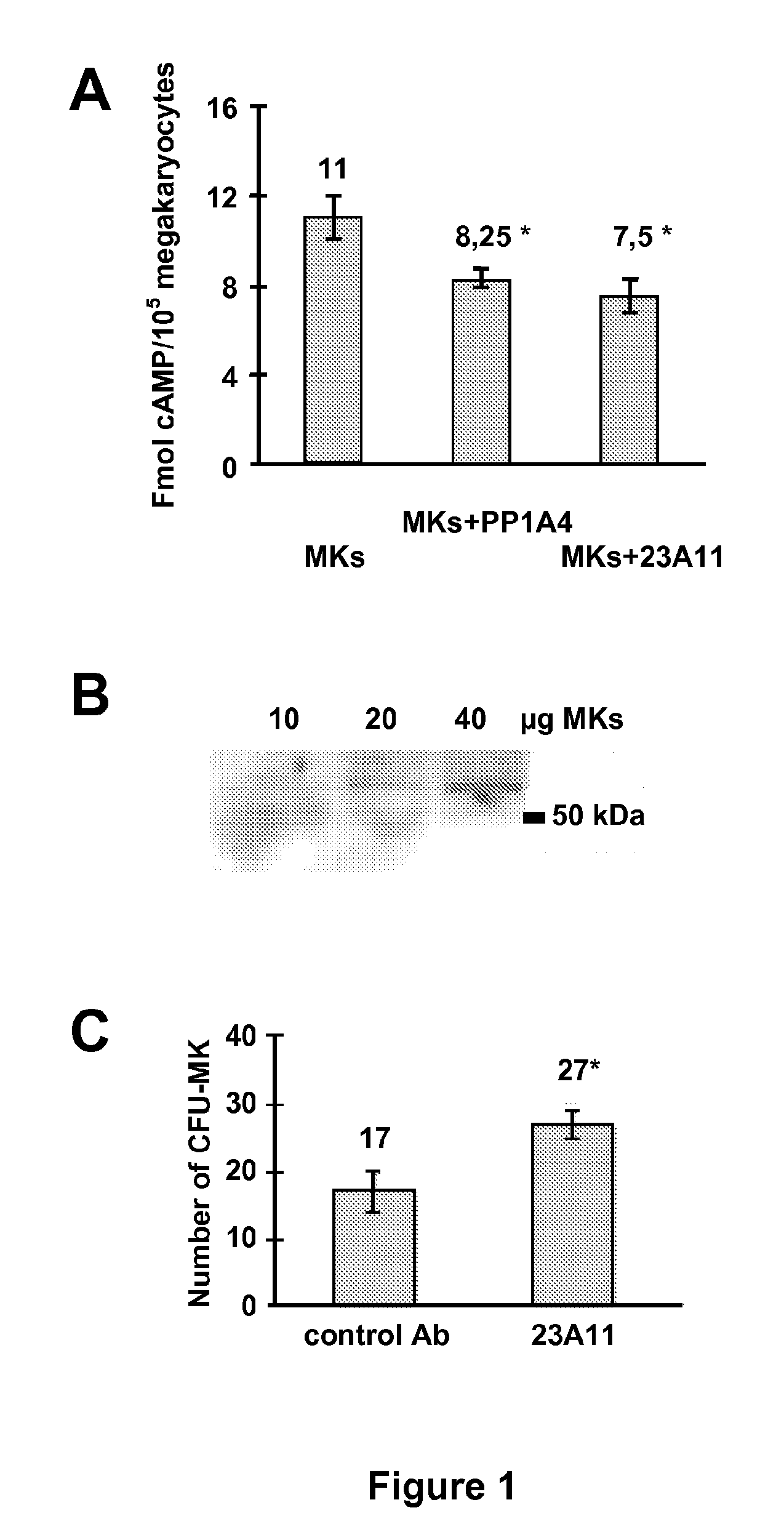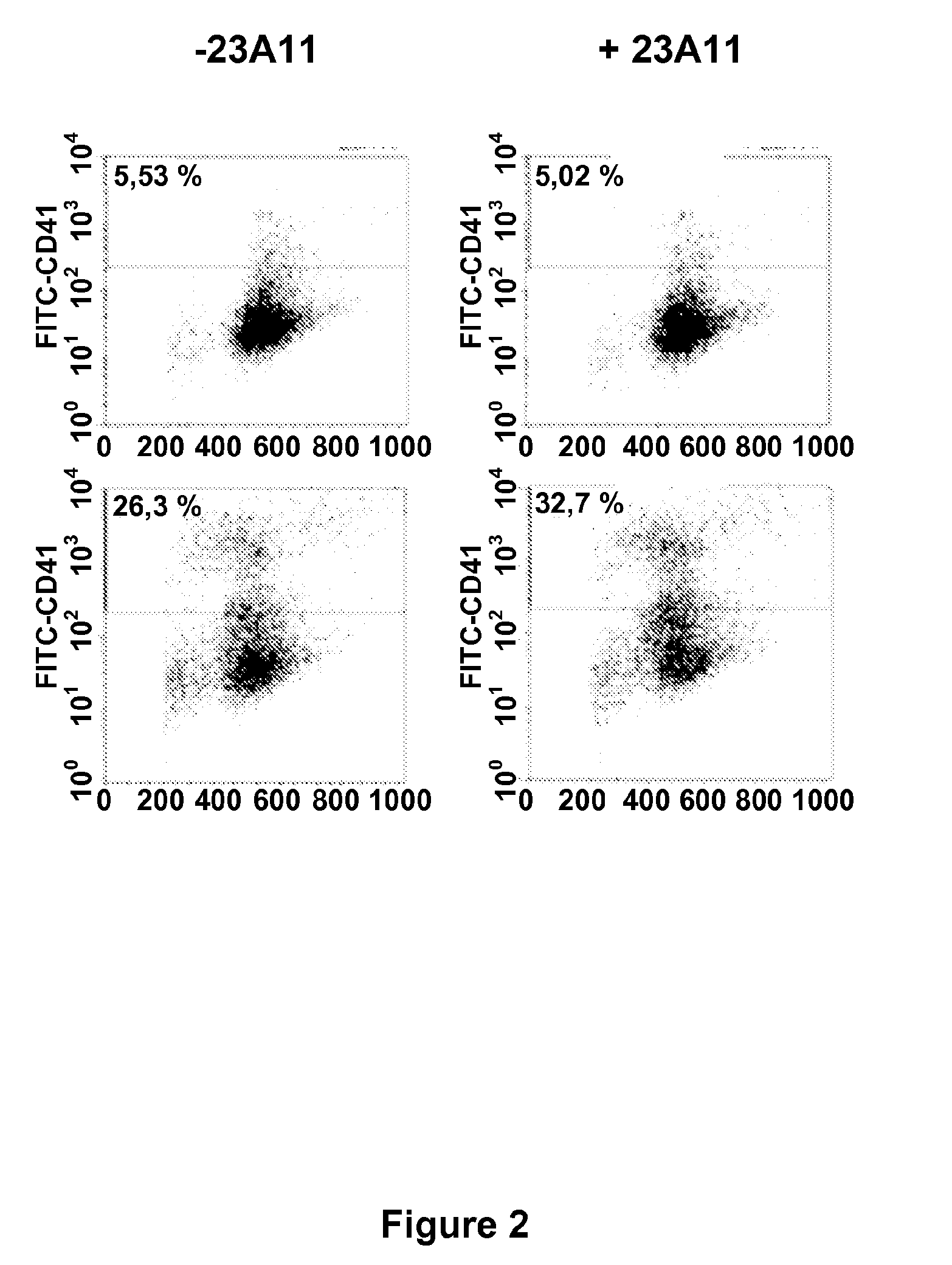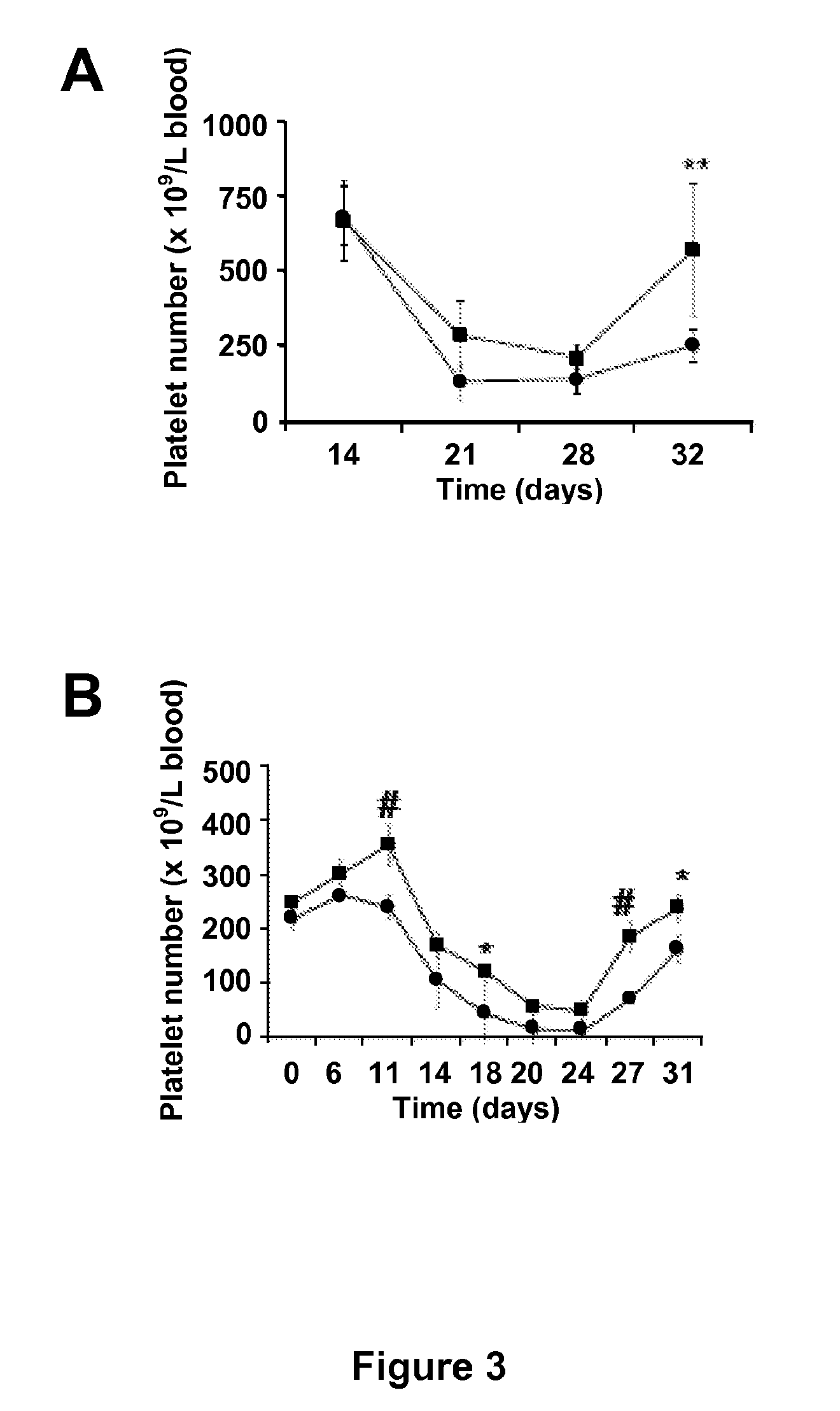Anti-vpac1 antibodies and their uses
a technology of monoclonal antibodies and antibodies, applied in the field of monoclonal antibodies, can solve the problems of not being widely used, none of these antibody preparations was able to interfere, and the success of thrombopoetin (tpo) in the treatment of thrombocytopenia is limited, and achieves the effect of enhancing the maturation of in vitro cultured cells and decreasing camp levels
- Summary
- Abstract
- Description
- Claims
- Application Information
AI Technical Summary
Benefits of technology
Problems solved by technology
Method used
Image
Examples
example 1
Antibodies
[0118]The following antibodies were used for flow cytometry: PE-conjugated anti-CD34 (8G12), FITC-conjugated anti-CD41a (HIP8), PerCP-conjugated anti-CD61 (RUU-PL7F12), and FITC-conjugated anti-CD41 / 61 (Leo-D2) (Emfret Analysis, Wurzburg, Germany). The anti-PACAP antibody PP1A4 was previously described (see International Patent Application Publication WO 2004 / 062684).
example 2
Generation of Anti-VPAC1 Antibodies
[0119]The sequence coding for human VPAC1 (SEQ ID NO:15; GenBank accession number NP—004615) was cloned into the vector pGEX vector which contains the sequence coding for GST (glutathione-S-transferase) at 5′ of insert. These recombinant fusion proteins were expressed in Escherichia coli and purified by affinity chromatography on immobilized glutathione (Amersham Biosciences, Freiburg, Germany). The primary antibodies were purified on protein A Sepharose™ beads (Amersham Biosciences) and controlled for their reactivity towards recombinant VPAC1 by ELISA. The purified fusion protein GST-VPAC1 was used for immunization of the BALB / c mice. Spleen cells of immunized mice were fused to a mouse myeloma cell line Sp2 / 0-Ag14 and the resulting hybridomas were screened for monoclonal antibodies binding to the VPAC1 receptor. In a second step, VPAC1-binding monoclonal antibodies were screened further for their capacity to lower cAMP levels in in vitro culture...
example 3
Identification of Monoclonal Antibody Inhibiting VPAC1 Receptor-Mediated cAMP Production
[0120]Megakaryocytes were isolated from bone marrow pooled from 5 (polyploidy by FACS analysis) or 10 (cAMP measurements) mice by magnetic cell sorting using the FITC-conjugated CD41 / 61 antibody and anti-FITC magnetic beads (Miltenyi Biotec, Utrecht, The Netherlands). Basal cAMP levels in megakaryocytes were measured in the presence of the phosphodiesterase inhibitor 3-isobutyl 1-methylxanthine (IBMX, 100 μM f.c.) using a cAMP enzyme-immunoassay (GE Healthcare Life Sciences, Uppsala, Sweden) as previously described (Freson et al. 2003, Freson et al. 2004). The incubation time with a monoclonal anti-VPAC1 antibody (at 10 μg / ml) was 2 hours in IMDM (Iscove's modified Dulbecco medium). The monoclonal antibody 23A11 was identified as a potent inhibitor of VPAC1 receptor-mediated cAMP production. Surprisingly, as indicated in FIG. 1A, the inhibitory properties of the VPAC1 receptor antibody were more ...
PUM
| Property | Measurement | Unit |
|---|---|---|
| incubation time | aaaaa | aaaaa |
| pH | aaaaa | aaaaa |
| pH | aaaaa | aaaaa |
Abstract
Description
Claims
Application Information
 Login to View More
Login to View More - R&D
- Intellectual Property
- Life Sciences
- Materials
- Tech Scout
- Unparalleled Data Quality
- Higher Quality Content
- 60% Fewer Hallucinations
Browse by: Latest US Patents, China's latest patents, Technical Efficacy Thesaurus, Application Domain, Technology Topic, Popular Technical Reports.
© 2025 PatSnap. All rights reserved.Legal|Privacy policy|Modern Slavery Act Transparency Statement|Sitemap|About US| Contact US: help@patsnap.com



